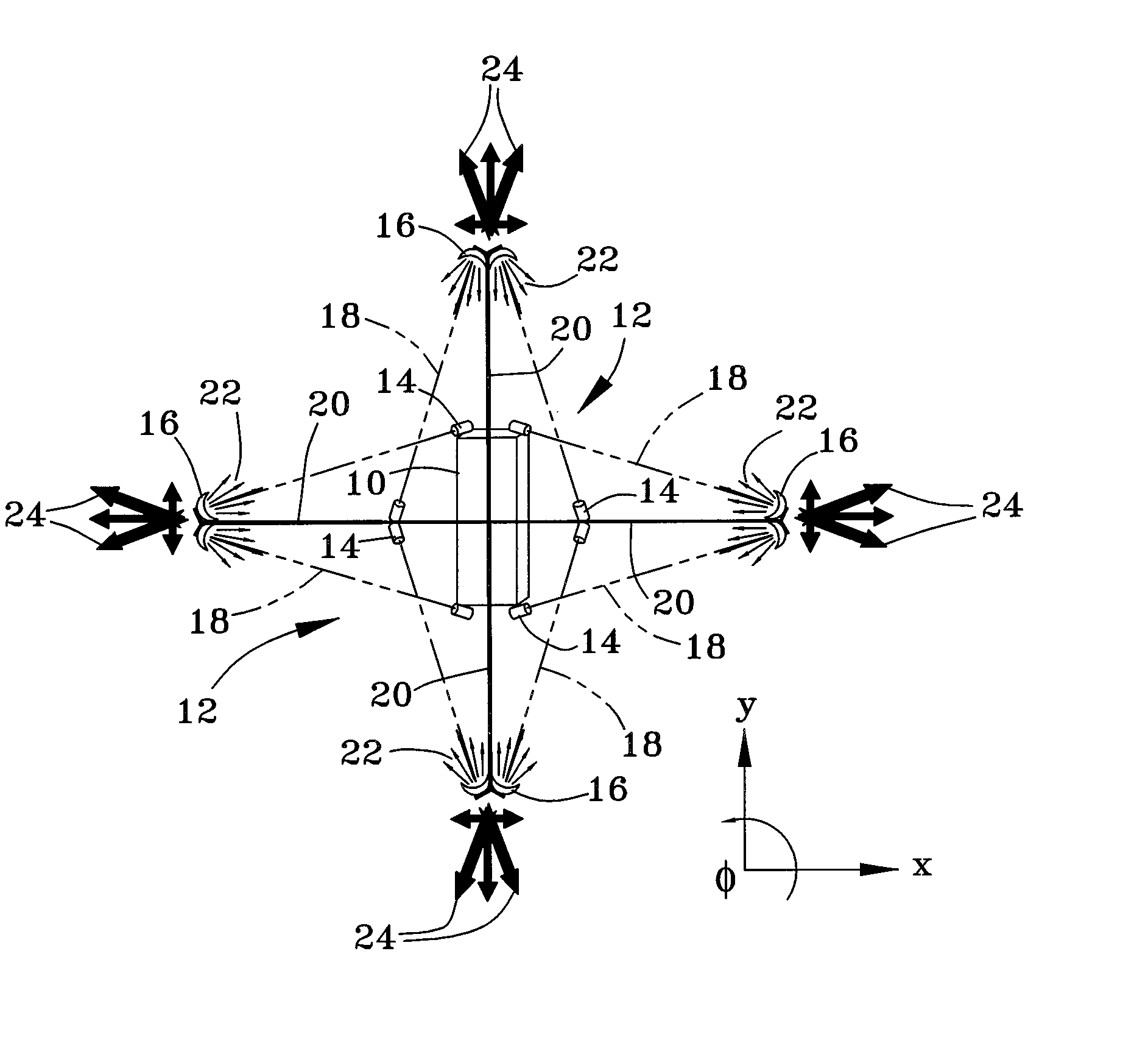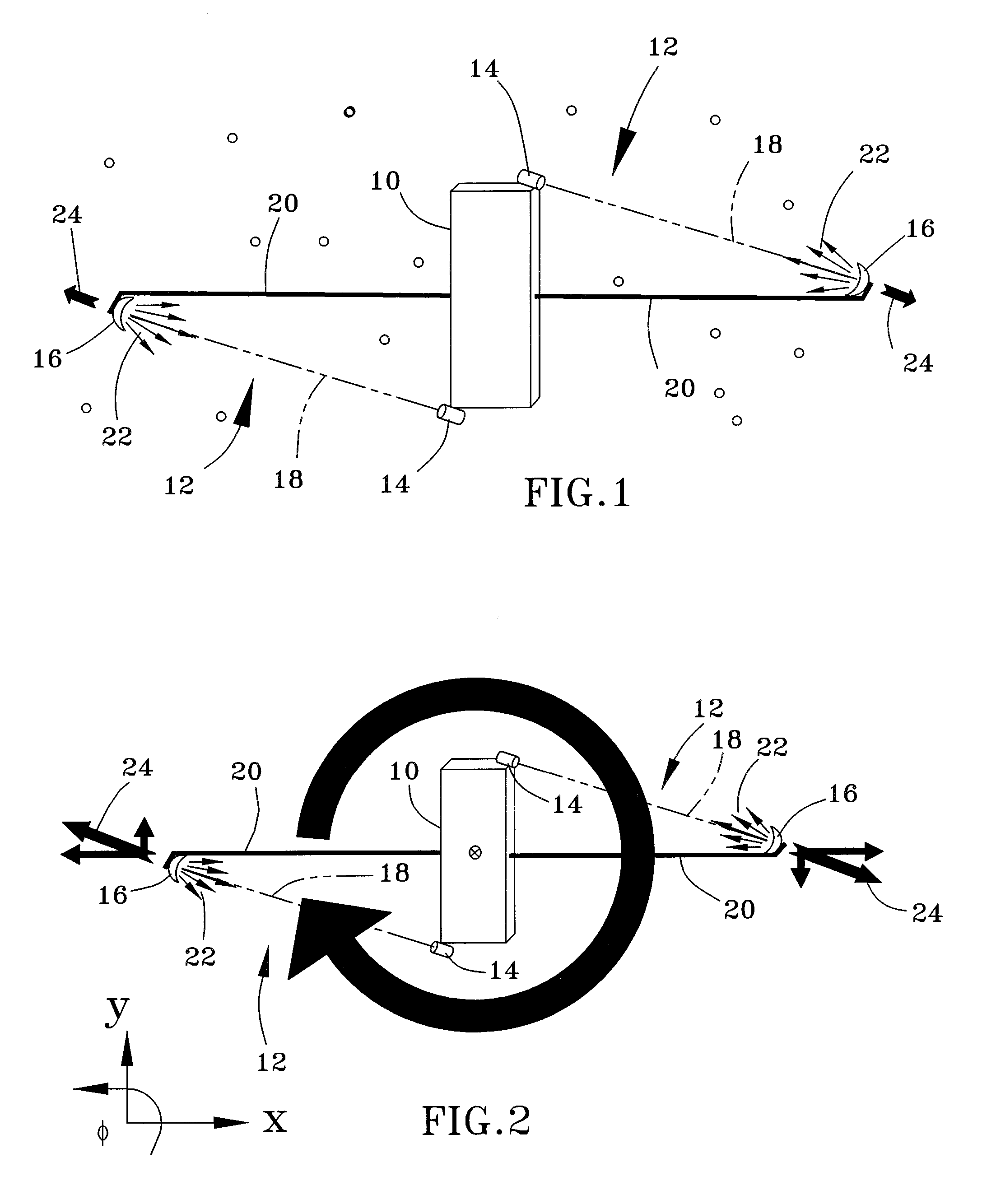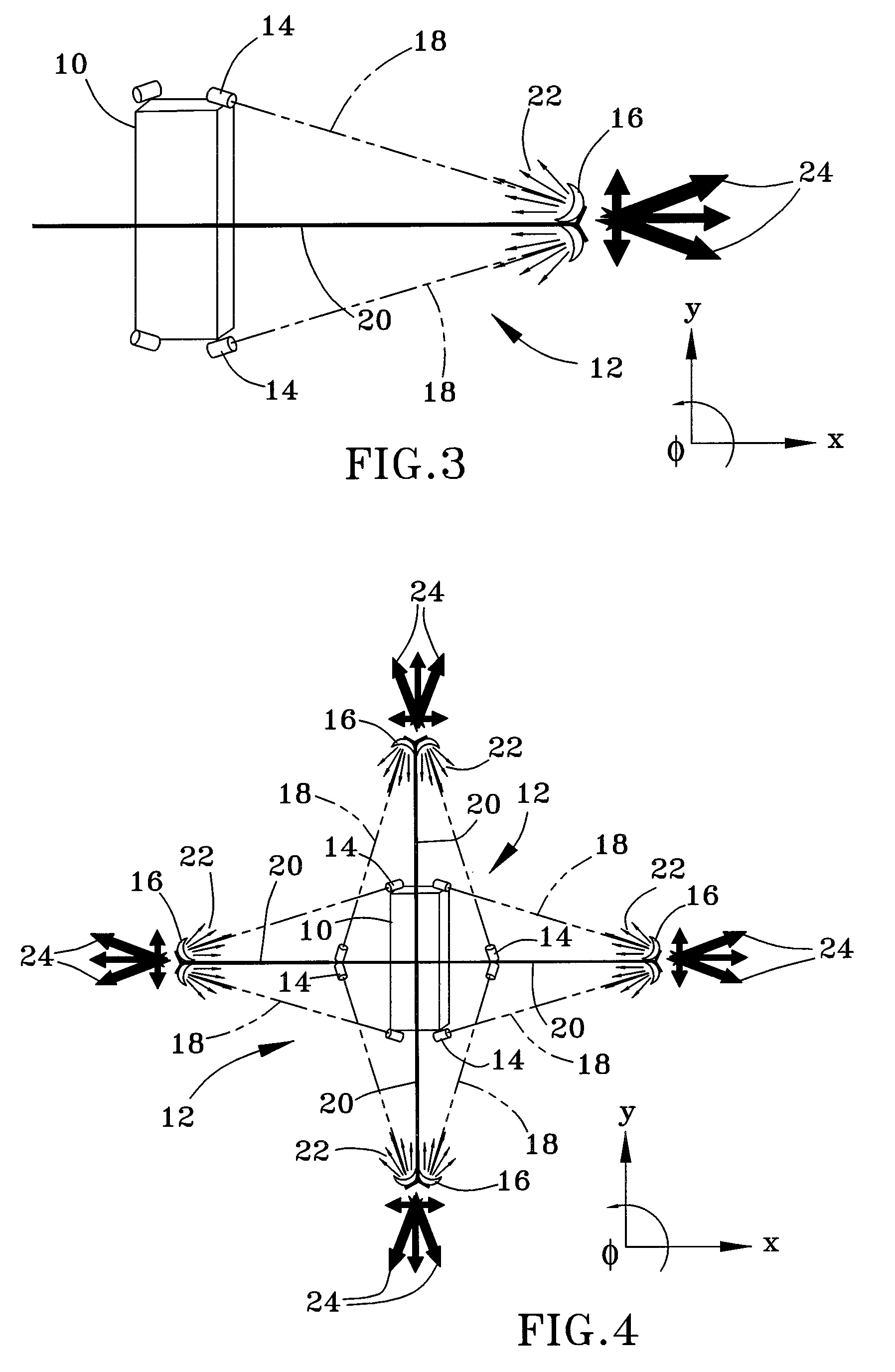System and method for attitude control and station keeping
a technology of attitude control and station keeping, applied in the field of propulsion and thrust generation, can solve the problems of limiting the performance of the rocket through the rocket equation, affecting reliability, and consuming a lot of fuel for the launch of the necessary replacement fuel
- Summary
- Abstract
- Description
- Claims
- Application Information
AI Technical Summary
Benefits of technology
Problems solved by technology
Method used
Image
Examples
Embodiment Construction
[0025]General concepts of the invention are represented in FIG. 1, which depicts a technique for imparting momentum to a space structure 10, such as a satellite or spacecraft, with solid-state thruster units 12. Each thruster unit 12 comprises an energy source 14 that generates and aims a high-energy beam 18 at a target 6. The energy sources 14 may be, for example, guns that generate laser or electron beams. Each target 16 is formed of a solid material capable of being sputtered, vaporized or otherwise ablated by the beam 18 impacting the target 16. For example, suitable targets materials for use with a laser beam include opaque materials such as metals and many types of minerals and ceramics, and suitable targets materials for use with an electron beam include electrically-conductive substances such as metals and semiconductors. The energy sources 14 and targets 16 can be rigidly attached to the structure 10 or interconnected with the structure 10, such as with braces 20 as depicte...
PUM
 Login to View More
Login to View More Abstract
Description
Claims
Application Information
 Login to View More
Login to View More - R&D
- Intellectual Property
- Life Sciences
- Materials
- Tech Scout
- Unparalleled Data Quality
- Higher Quality Content
- 60% Fewer Hallucinations
Browse by: Latest US Patents, China's latest patents, Technical Efficacy Thesaurus, Application Domain, Technology Topic, Popular Technical Reports.
© 2025 PatSnap. All rights reserved.Legal|Privacy policy|Modern Slavery Act Transparency Statement|Sitemap|About US| Contact US: help@patsnap.com



